19 Wild Animals in Israel [Wildlife in Israel]
Want to know more about wildlife in Israel?
Discover 19 wild animals in Israel in this post, as well as interesting facts about them. 🇮🇱
Learn All About Israeli Animals
Ready to learn all about Israeli animals?
I’ve always been fascinated by animals, and by how they can be so different from one country to another. In this guide, we’ll focus on the many animals Israel has on the land, in the sky, and underwater.
I’ve split the guide into 4 categories:
- Native animals from Israel
- Endangered animals of Israel
- What is Israel national animal?
- How many animals native to Israel?
Let’s dive in right away with our first category!
Native Animals from Israel
Israel is an Asian country located in the western part of the continent, next to the Mediterranean Sea. It is one of the smallest countries in all of Asia, and it is a country of many cultures, being the birthplace of several religions. It is bordered by Lebanon, Syria, Jordan, and Egypt, and its capital and largest city is Jerusalem, which counts more than 936,000 inhabitants (but more than 1,253,000 if you include the metropolitan area).
An interesting part of the country that I wanted to tackle is its wildlife. In light of that, I have listed the best of it, and I hope you will love learning what animals live in Israel.
Here’s the Israel animals list.
1. Arabian oryx
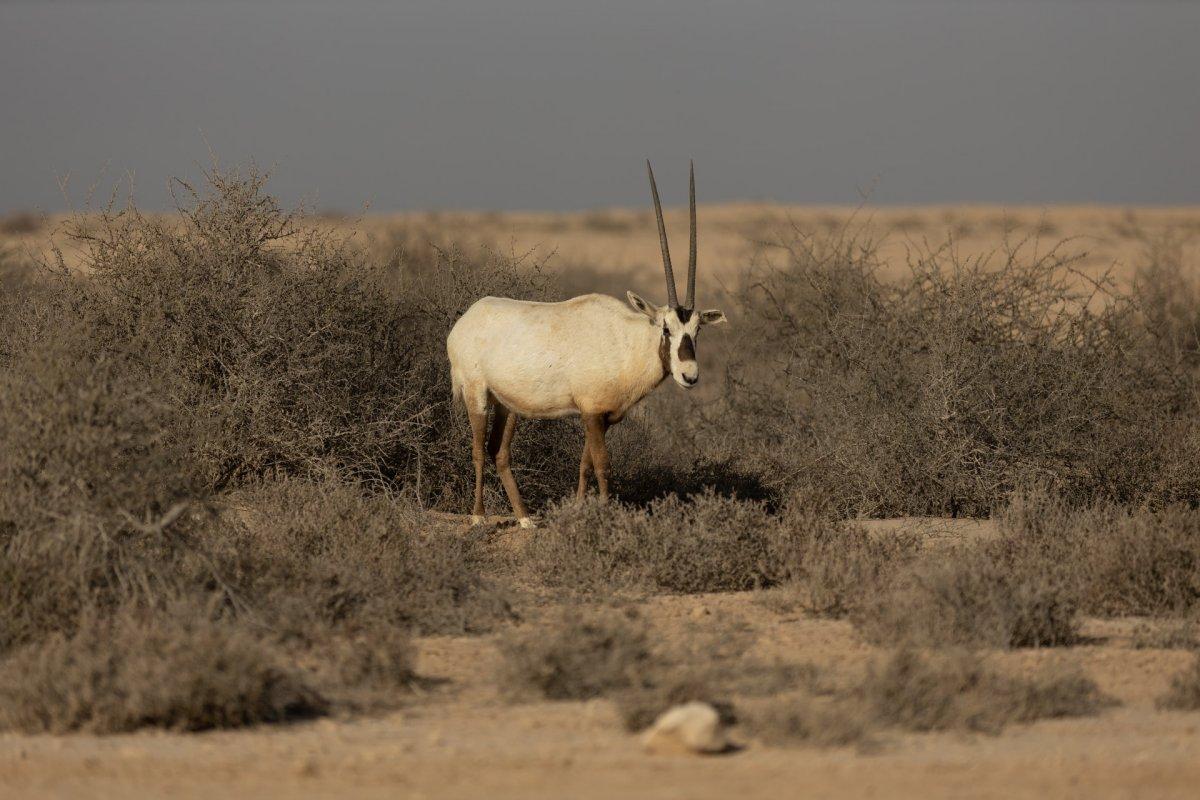
- Name: Arabian oryx
- Scientific name: Oryx leucoryx
- Conservation status:
The Arabian oryx, also known as the white oryx, is a medium-sized species of antelope native to the Arabian Peninsula. It inhabits the steppe and desert areas, and has a completely unique conservation status: it is the only animal to go from extinct in the wild (at the beginning of the 1970s) to vulnerable (in 2011)! Definitely, an inspiring story that gives hope to other seriously endangered species in the world.
2. Arabian leopard
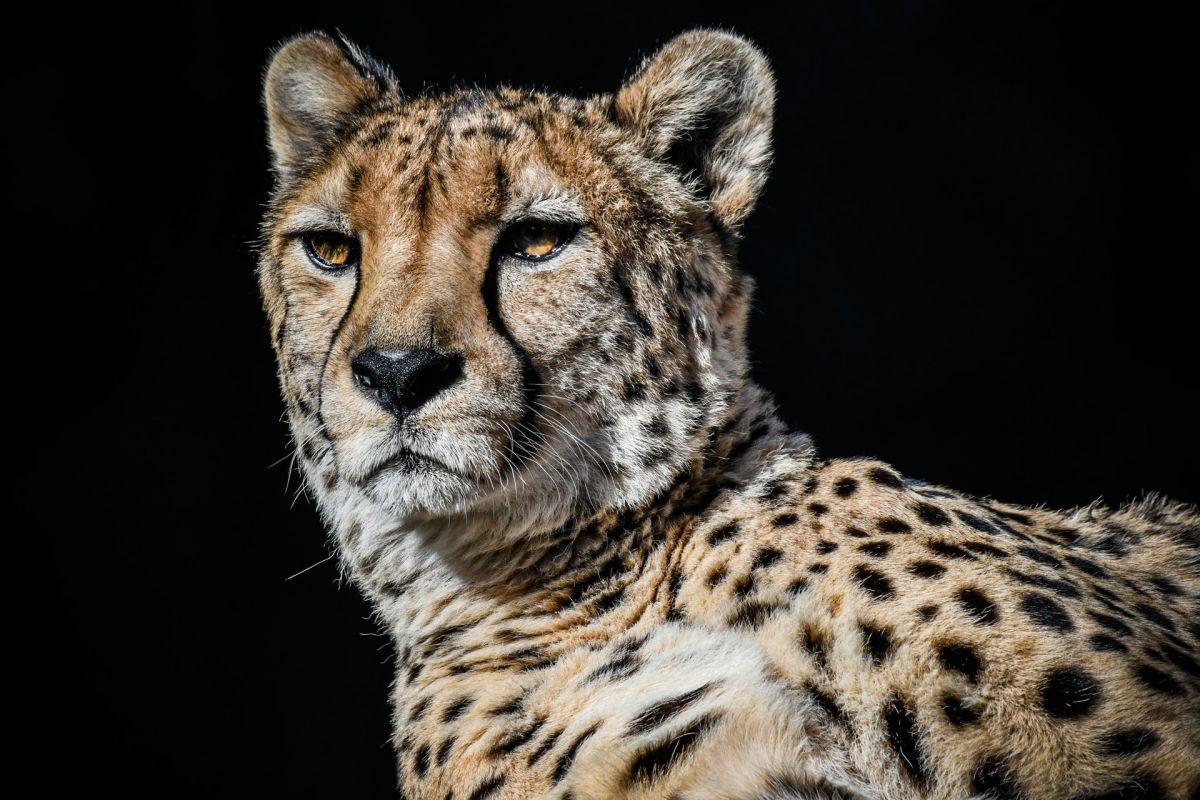
- Name: Arabian leopard
- Scientific name: Panthera pardus nimr
- Conservation status:
The Arabian leopard is a subspecies of leopard native to the Arabian Peninsula. Since there are fewer than 200 individuals in the wild and that they all live in scattered populations, it has been listed as critically endangered.
Out of all leopards, the Arabian leopard is the smallest one. It is closely related to the African leopard and inhabits hilly steppes and mountainous areas.
3. Persian fallow deer
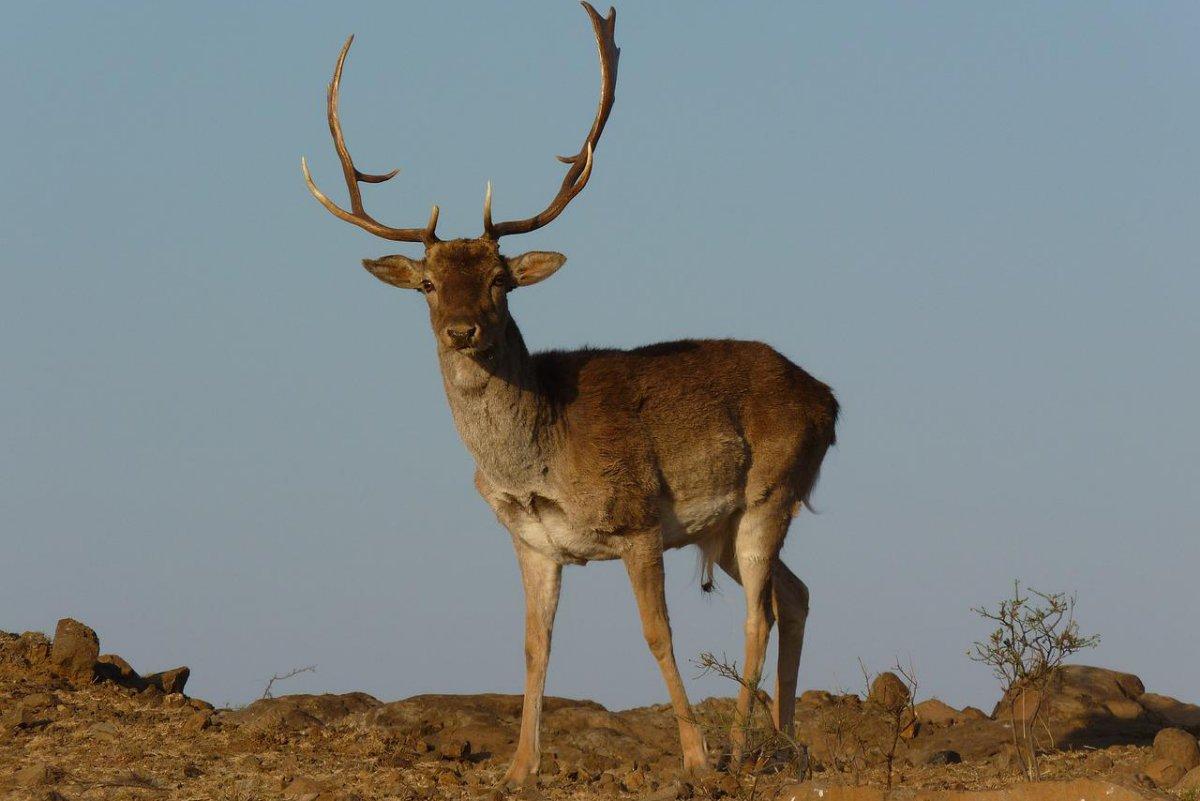
- Name: Persian fallow deer
- Scientific name: Dama mesopotamica
- Conservation status:
The Persian fallow deer is a species of deer that used to be found in all of the Middle East, but that only lives in Israel and Iran now, after reintroduction efforts: while there were only a handful of deers during the 1960s, their population has rebounded and they are now “only” endangered.
This fallow deer usually lives in woodlands, and its main predator is the gray wolf. It is a herbivore that mostly feeds on grasses, but also nuts and leaves.
4. Sand cat

- Name: Sand cat
- Scientific name: Felis margarita
- Conservation status:
The sand cat, also known as the dune cat, is a small species of wild cat native to the desert and sandy areas. Although considered of least concern in its global range, it is on the brink of local extinction in Israel.
This wild cat spends the day resting in underground dens and comes out at night in order to hunt birds and small rodents. On top of this, believe it or not, it efficiently kills venomous snakes!
5. Nubian ibex
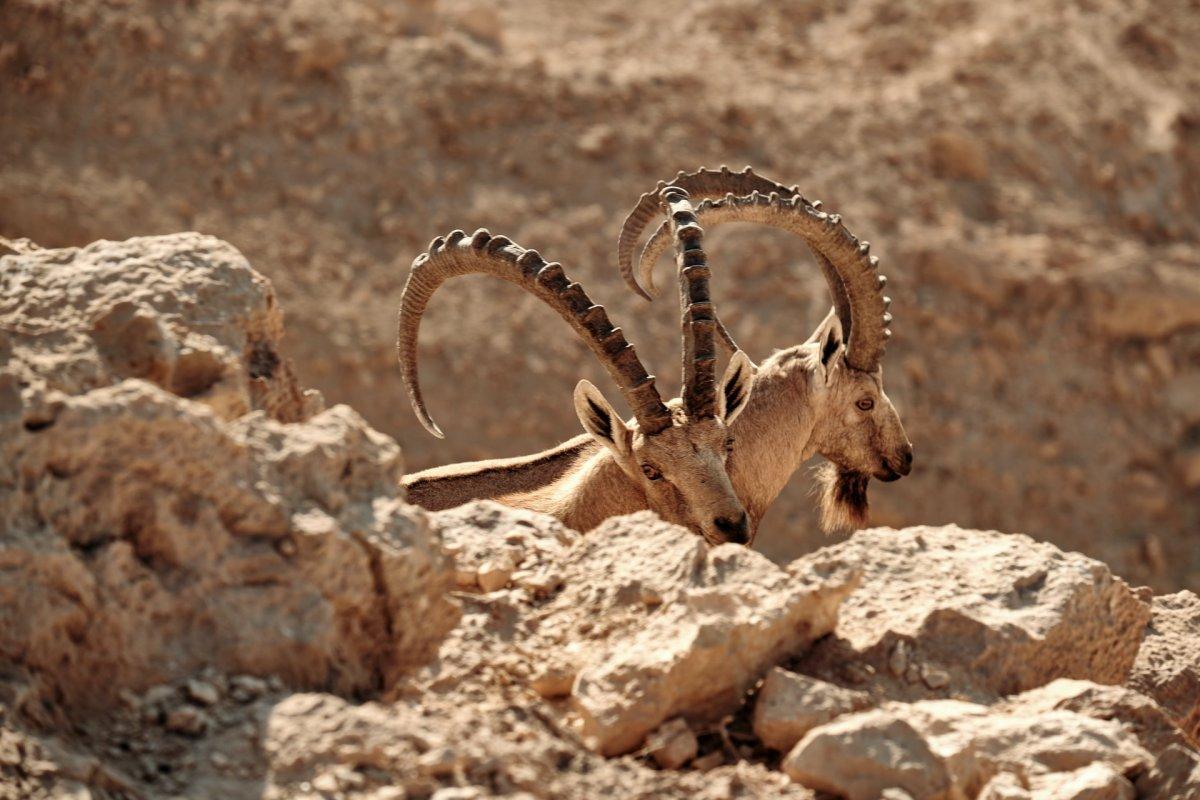
- Name: Nubian ibex
- Scientific name: Capra nubiana
- Conservation status:
The Nubian ibex is a species of desert goat native to northern and northeastern Africa, as well as the Middle East. After being considered conspecific with the Alpine ibex, it is now a distinct species of about 1,200 wild individuals.
This ibex inhabits dry, rough, mountainous terrain where it mostly feeds on leaves and grasses. Its main natural predators are eagles, foxes, wolves, vultures, and leopards, and it is a social animal that gathers in herds.
6. Eurasian hoopoe
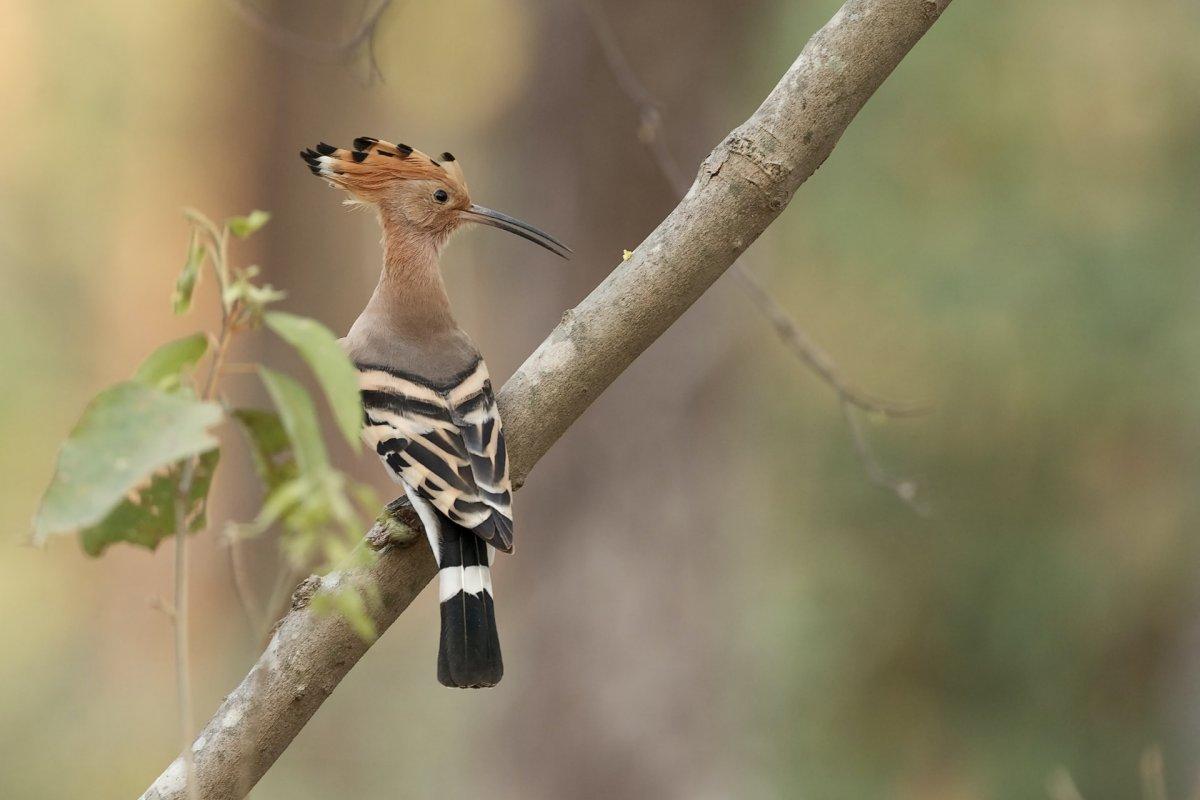
- Name: Eurasian hoopoe
- Scientific name: Upupa epops
- Conservation status:
The Eurasian hoopoe is the most widespread species of hoopoe, being found in Europe, Asia, and the northern half of Africa. It is the national bird of Israel and chooses a habitat with vegetated ground and trees, cliffs, and walls in which it nests.
This bird mostly feeds on insects, frogs, and reptiles, and is threatened by habitat loss and overhunting, despite being listed as least concern for now.
7. Rock hyrax
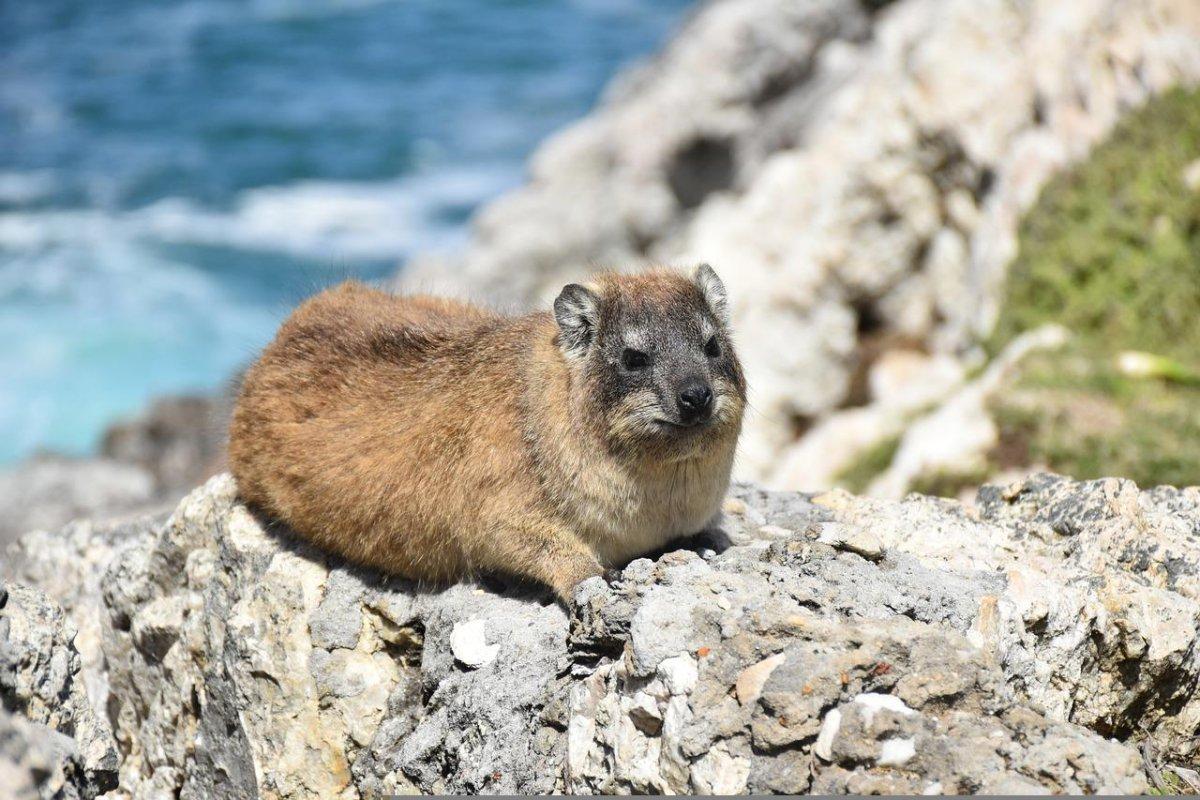
- Name: Rock hyrax
- Scientific name: Procavia capensis
- Conservation status:
The rock hyrax, also known as the Cape hyrax, the dassie, or the rock rabbit, is a medium-sized species of terrestrial mammal native to the Middle East and Africa. It can be found at up to 4,200 m / 13,800 ft above sea level, and usually lives near rock crevices in which it can escape from predators.
Throughout most of its range, this animal is not endangered, and it is even considered a pest because it carries parasites.
8. Dugong

- Name: Dugong
- Scientific name: Dugong dugon
- Conservation status:
The dugong is a species of marine mammal and a member of the Sirenia order, which also includes three manatee species. Its range spreads over about 40 countries throughout the Indo-West Pacific, and it depends on seagrass for survival.
This mammal has no dorsal fin or hind limbs, and its forelimbs are paddle-like. It has been hunted for thousands of years for its oil and meat, but its biggest threats are habitat fragmentation, pollution, and fishing practices.
9. Egyptian fruit bat
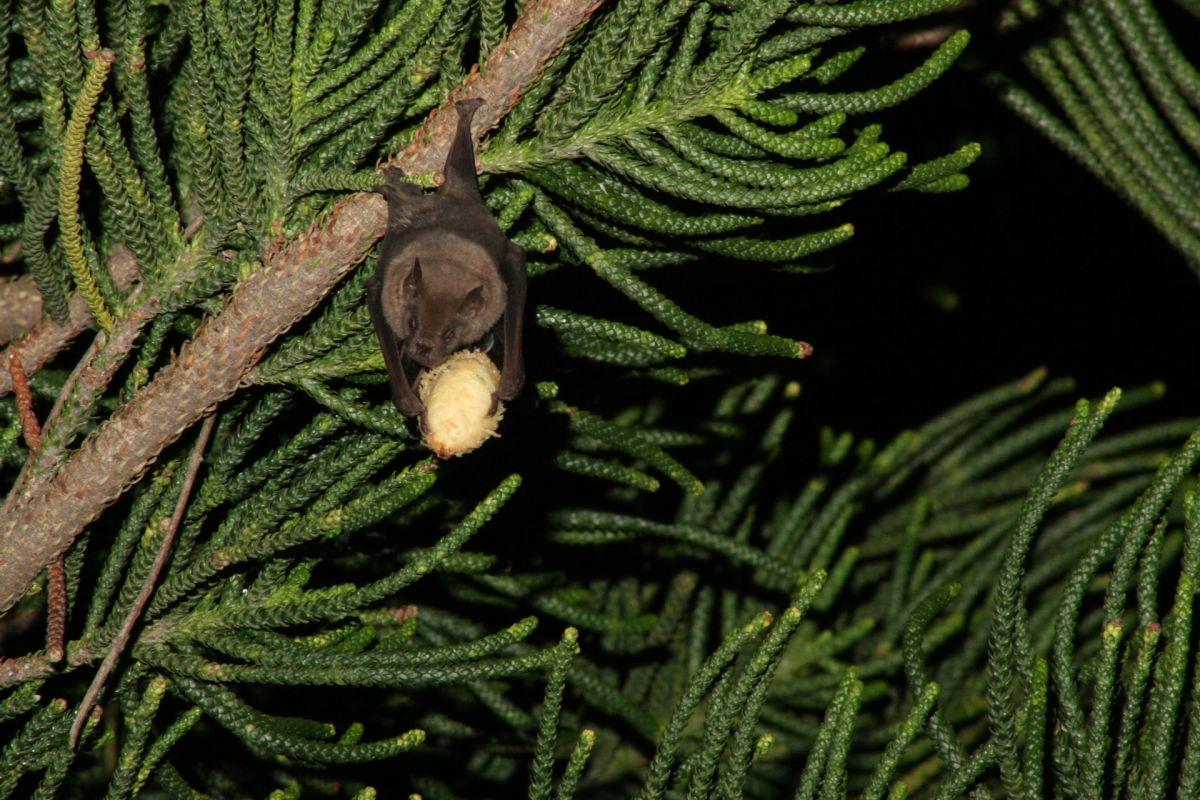
- Name: Egyptian fruit bat
- Scientific name: Rousettus aegyptiacus
- Conservation status:
The Egyptian fruit bat, also known as the Egyptian rousette, is a species of megabat native to Africa, the Mediterranean, the Middle East, and the Indian subcontinent. It is highly social and lives in colonies of thousands of individuals.
Like most other bats, it uses echolocation to find its food, which is almost exclusively fruit depending on availability and season.
This bat is a pest for farmers, but it is an important seed disperser and pollinator for many different species of plants and trees.
10. Striped hyena
- Name: Striped hyena
- Scientific name: Hyaena hyaena
- Conservation status:
The striped hyena is a species of hyena native to the Middle East, the Caucasus, Central Asia, the Indian subcontinent, and northern and eastern Africa. There are fewer than 10,000 mature individuals left in the wild, which suffer from persecution and depletion of prey, which is why this species is considered near threatened. In fact, its global population is expected to decline by more than 10 percent over the next three generations.
11. Persian onager
- Name: Persian onager
- Scientific name: Equus hemionus onager
- Conservation status:
The Persian onager, also known as the Persian zebra or the Persian wild ass, is a species of wild donkey native to Iran; however, it was introduced to several other countries such as Israel. It inhabits mountain steppes and semidesert or desert plains.
There are no more than 600 individuals of this species, and it is seriously endangered because of poaching for meat and drought due to climate change.
12. Arabian gazelle
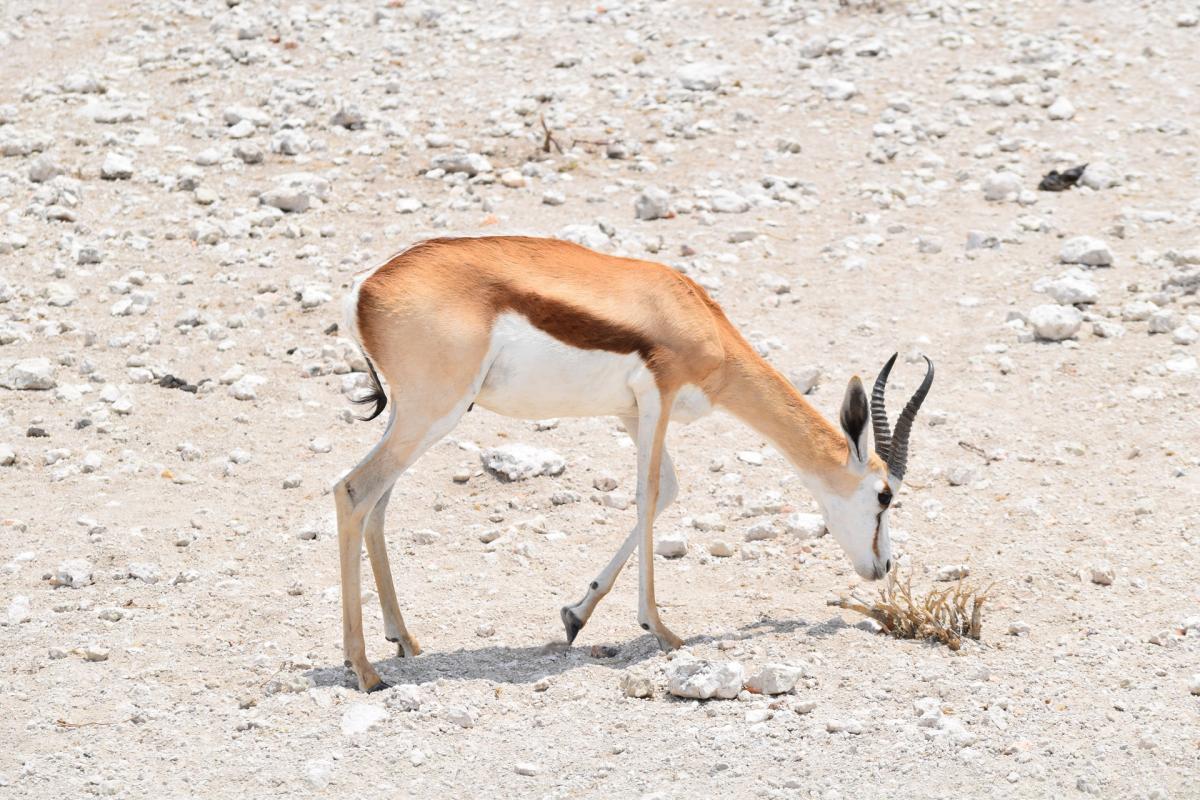
- Name: Arabian gazelle
- Scientific name: Gazella arabica
- Conservation status:
The Arabian gazelle is, as its name suggests, a species of gazelle native to the Arabian Peninsula. It is listed as vulnerable and faces multitudes of threats, such as predation, human hunting, climate change, and competition. Its population is steadily declining, and human expansion does not help.
One main factor that shapes this species’ population is wolf encounters. Depending on the area, it either increases or decreases!
13. Arabian ostrich
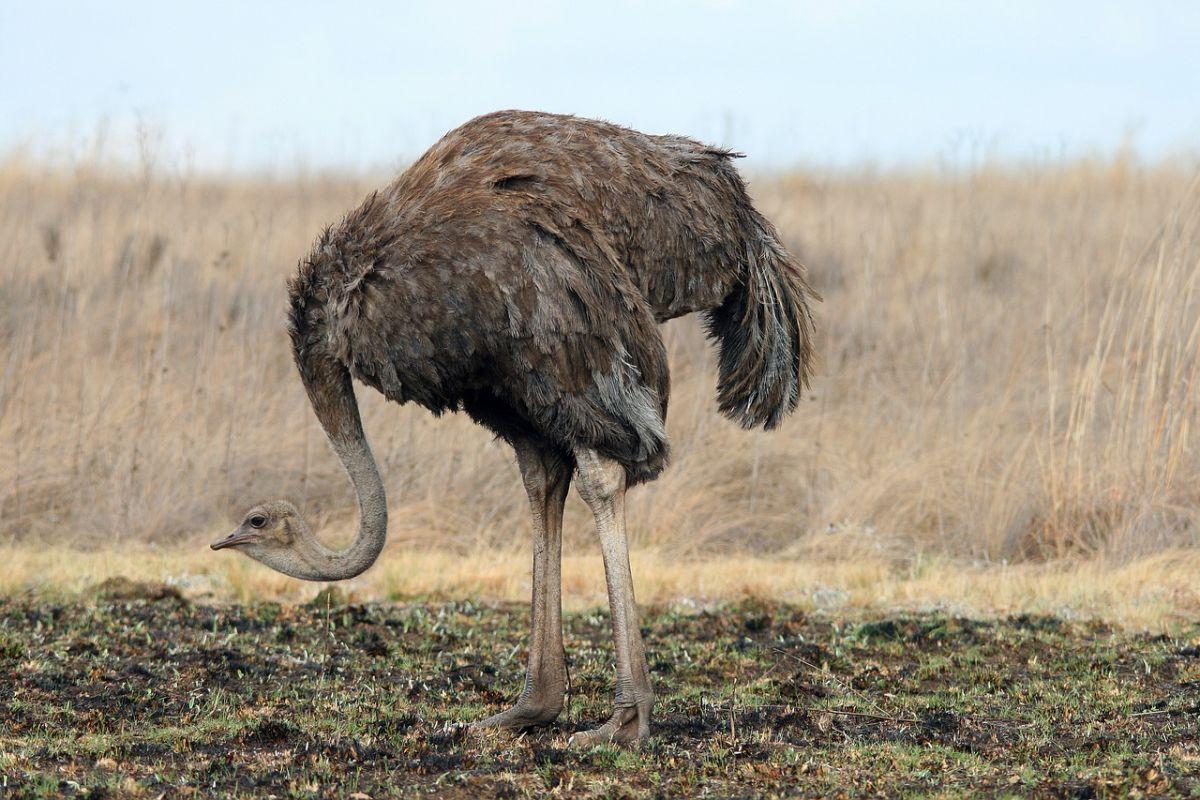
- Name: Arabian ostrich
- Scientific name: Struthio camelus syriacus
- Conservation status:
The Arabian ostrich, also known as the Middle Eastern ostrich or the Syrian ostrich, was a subspecies of the ostrich that used to roam the Arabian Peninsula and the Near East until the middle of the 20th century, when the last specimen was shot, probably around the 1940s.
Outside of the introduction of firearms, the Arabian ostrich disappeared because of increased aridity, excessive game hunting, and poaching.
14. Pink-backed pelican
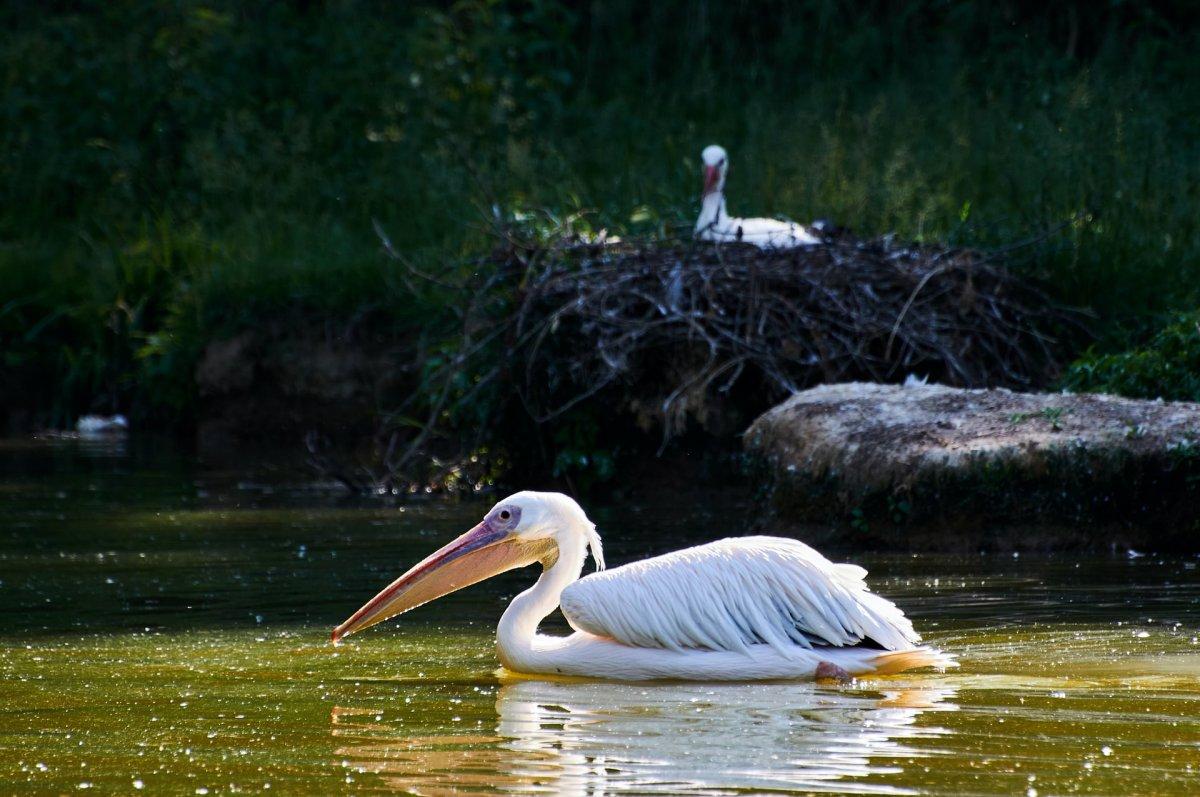
- Name: Pink-backed pelican
- Scientific name: Pelecanus rufescens
- Conservation status:
The pink-backed pelican is a species of pelican native to the southern parts of the Arabian Peninsula and the shallow lakes of Africa. It has been extirpated from Madagascar, and is relatively small compared to other pelicans, but not to other birds.
This bird mostly feeds on amphibians and fish and typically fishes in groups. It roosts and breeds in trees in areas such as mangrove swamps, and can be seen in coastal areas and saline lagoons.
15. African sacred ibis
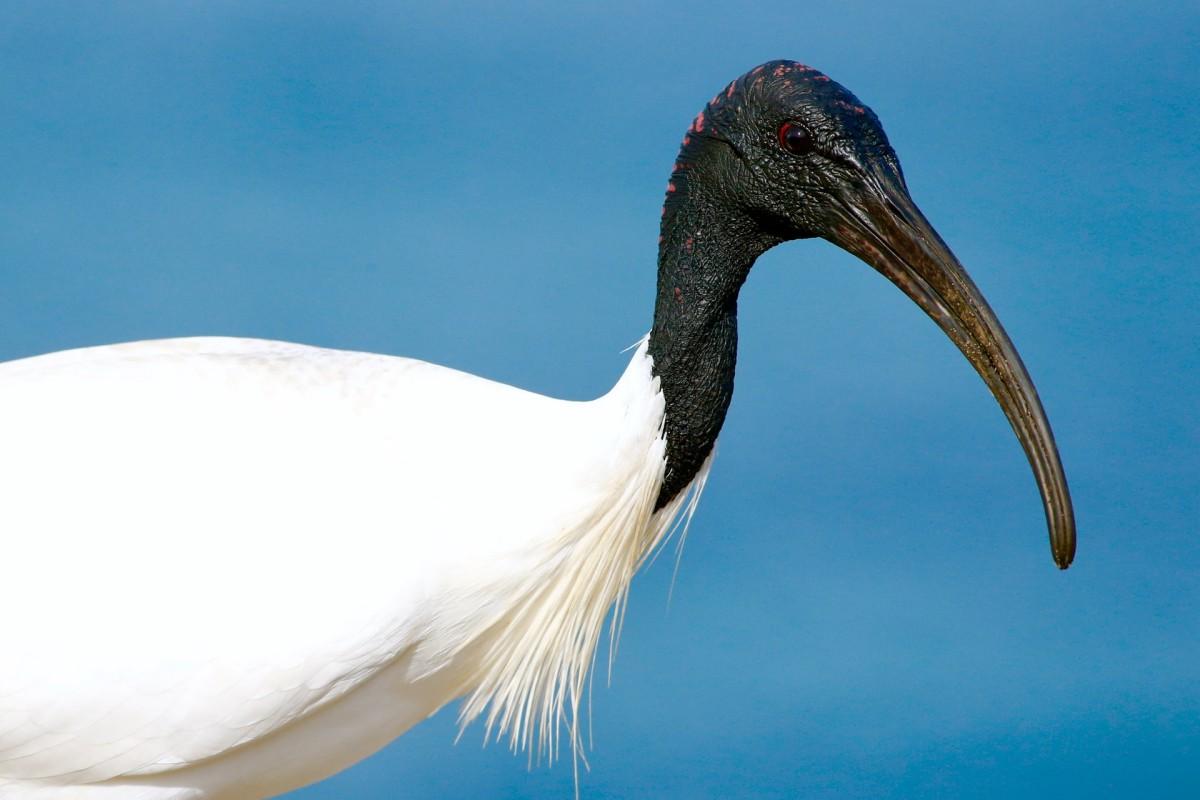
- Name: African sacred ibis
- Scientific name: Threskiornis aethiopicus
- Conservation status:
The African sacred ibis is a species of wading bird native to Africa and the Middle East. It is very famous for its role in Egypt mythology, giving its face to the god of learning and of the moon Thoth; ironically, it is extirpated from Egypt however.
This ibis reproduces once a year during the wet season, in Africa, and it gathers in large colonies of about 1,000 birds.
16. Lappet-faced vulture
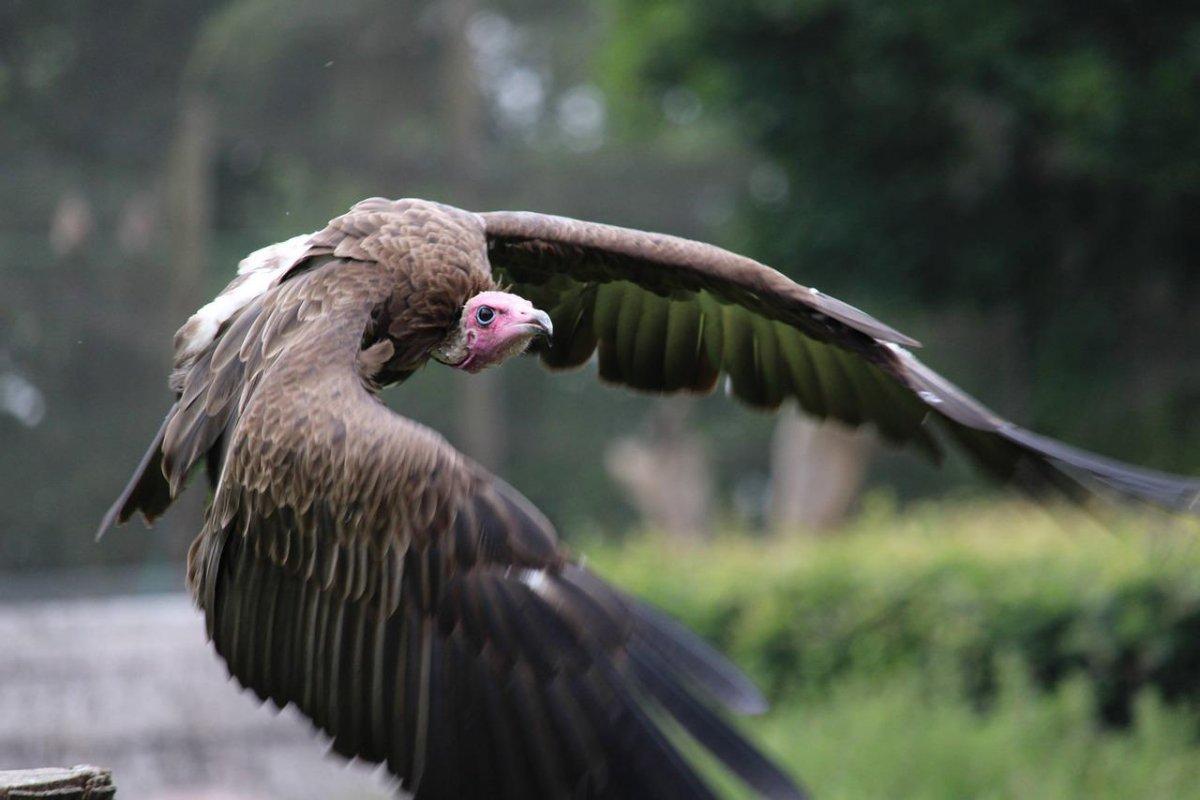
- Name: Lappet-faced vulture
- Scientific name: Torgos tracheliotos
- Conservation status:
The lappet-faced vulture, also known as the Nubian vulture, is a species of Old World vulture belonging to the same group as kites, eagles, hawks, and buzzards. This bird is solitary and is threatened by habitat loss and disturbances at the nesting site.
Its scientific name means “cartilage-eared vulture”, and it inhabits dry savanna, arid plains, desert with scattered trees, and thornbush. It prefers areas with sparse vegetation, so it can easily spot the animal carcasses it feeds on.
17. Alexandrine parakeet
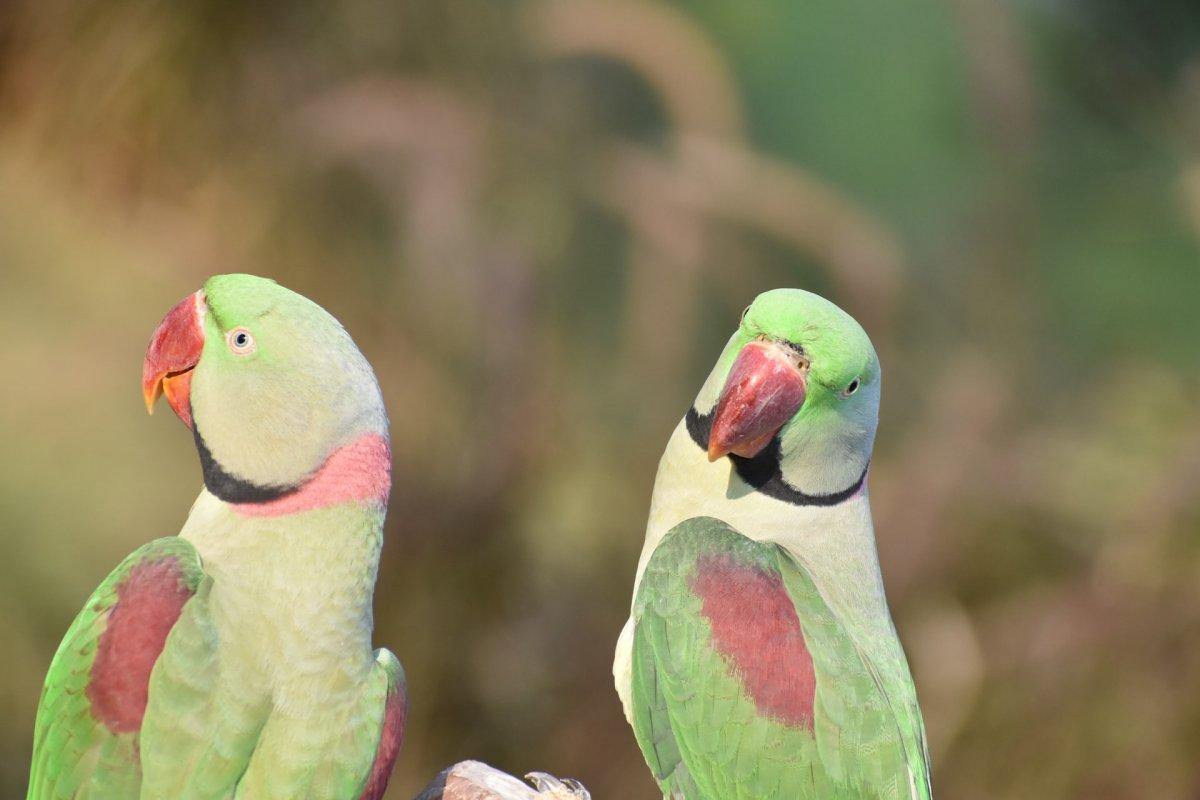
- Name: Alexandrine parakeet
- Scientific name: Psittacula eupatria
- Conservation status:
The Alexandrine parakeet, also known as the Alexandrine parrot, is a medium-sized species of a parrot named after Alexander the Great, who transported many of these birds from India to multiple Mediterranean and European countries. There, they were highly prized by the nobility, warlords, and royalty.
This bird is one of the largest parakeets, and it lives in forests, mangrove forests, agricultural lands, and woodlands at up to 900 m / 3,000 ft above sea level.
18. Mediterranean monk seal
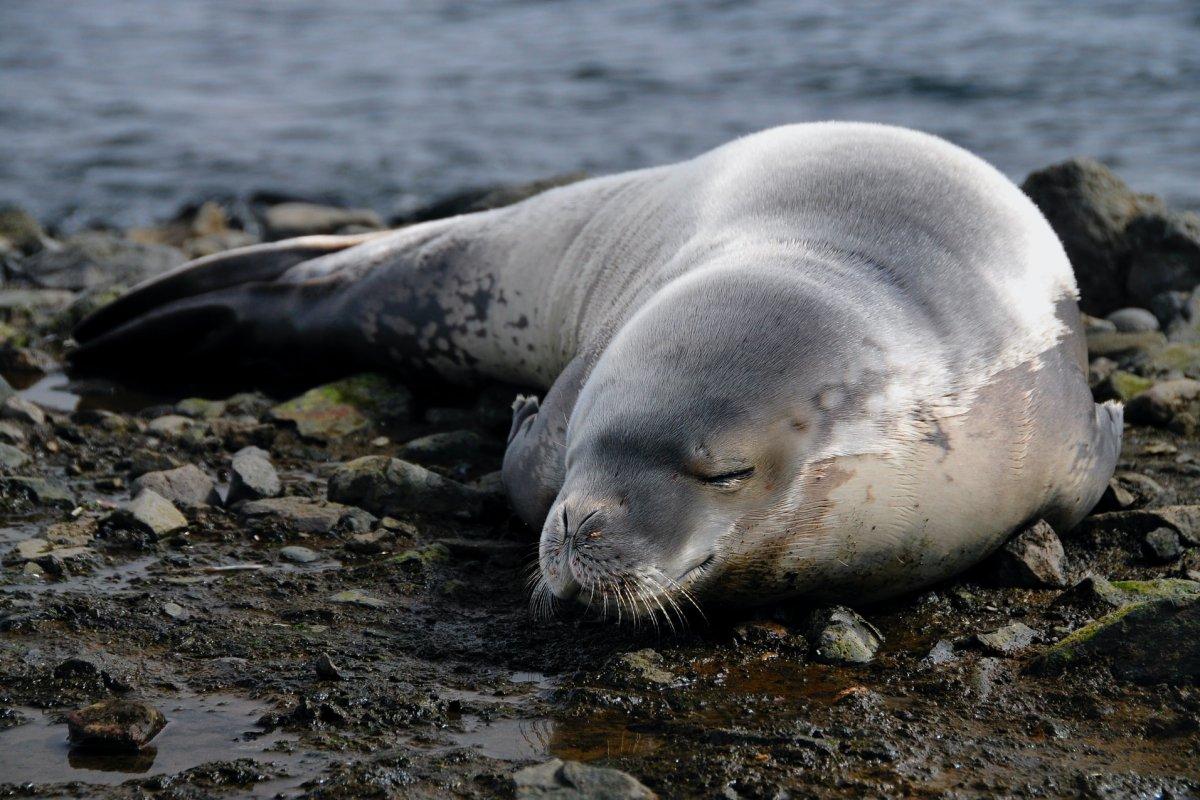
- Name: Mediterranean monk seal
- Scientific name: Monachus monachus
- Conservation status:
The Mediterranean monk seal is a species of seal living in scattered populations across the Mediterranean Sea. Fewer than 700 individuals remain, and it is probably the rarest of pinnipeds.
This animal is diurnal and largely feeds on fish and mollusks, mostly octopus, eels, and squids, and lives in shallow coastal waters. A long time ago, it used to live on open beaches; now, it prefers hiding in sea caves.
19. Marbled polecat
- Name: Marbled polecat
- Scientific name: Vormela peregusna
- Conservation status:
The marbled polecat is a small species of mammal native to southern Europe and as far as western China. It inhabits dry areas and grasslands, and, similarly to other polecats, emits a strong-smelling secretion when threatened.
This mammal is mostly active during the morning and the evening, and while it has weak eyesight, it relies on its very strong sense of smell for most activities; pretty ironic considering how smelly it is, right?
—
So this was my list of animals in Israel. I hope you enjoyed this list and that you learned something new today.
In case you want to learn more about animals in the country, feel free to keep reading, as I still have lots of things to tell you about:
Endangered Animals of Israel
This is definitely the saddest part of the list, but it is very important to raise awareness. Because of this, let’s go through the list of endangered animals in Israel.
Here are the animals in danger of extinction in Israel.
- Long jaw tristramella
- Tristramella intermedia
- Hula bream
- Sociable lapwing
- Halavi guitarfish
- Hula painted frog
- Sand tiger shark
- Oceanic whitetip shark
- and 21 more…
- Lappet-faced vulture
- Basking shark
- Mediterranean monk seal
- Steppe eagle
- Atlantic petrel
- and 38 more…
To see the full list of endangered species in Israel, head over to the International Union for Conservation of Nature’s Red List.
What is the National Animal of Israel?
The national animal of Israel is the mountain gazelle.
Also called the Palestine mountain gazelle or the Israeli gazelle, the mountain gazelle is a widely distributed species of gazelle that is considered endangered.
Both sexes have horns, and their biggest populations are located in Israel, the Golan Heights, and the West Bank. This gazelle has long been an important symbol in the country, and best represents it.
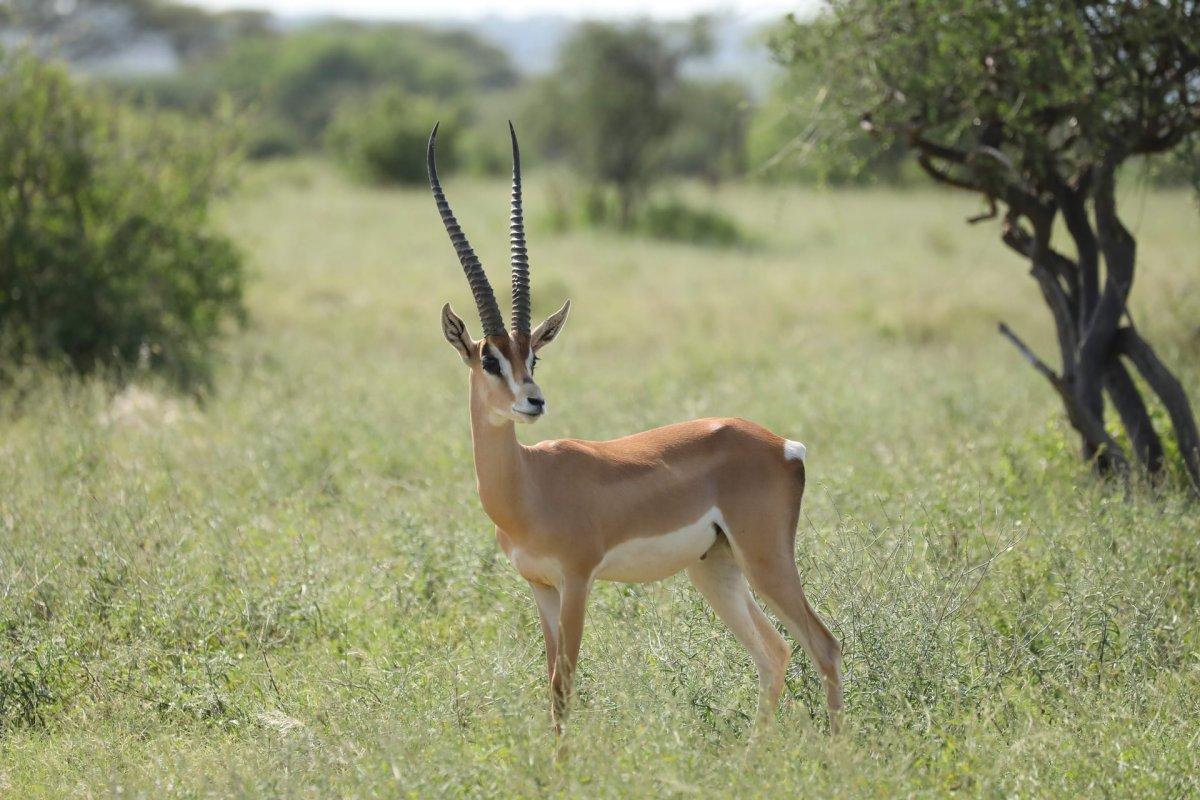
How Many Animals Native to Israel?
What is the diversity of native animals in Israel?
Let’s look at the total number of species of Chordata (mammals, birds, fishes, and reptiles).
Total number of animal species in Israel: 1,741 (5,029 in total in West and Central Asia)
More About Animals in the World!
Loved these Israel wildlife facts? Want to see what animals live in other countries?
Then check out these posts:
Or click here to see ALL the facts up on the blog! Spoiler alert: there’s A LOT of them.
Share the knowledge! Click on the buttons below to share information about these famous animals in Israel with your friends, and help them learn more about the world 🙂
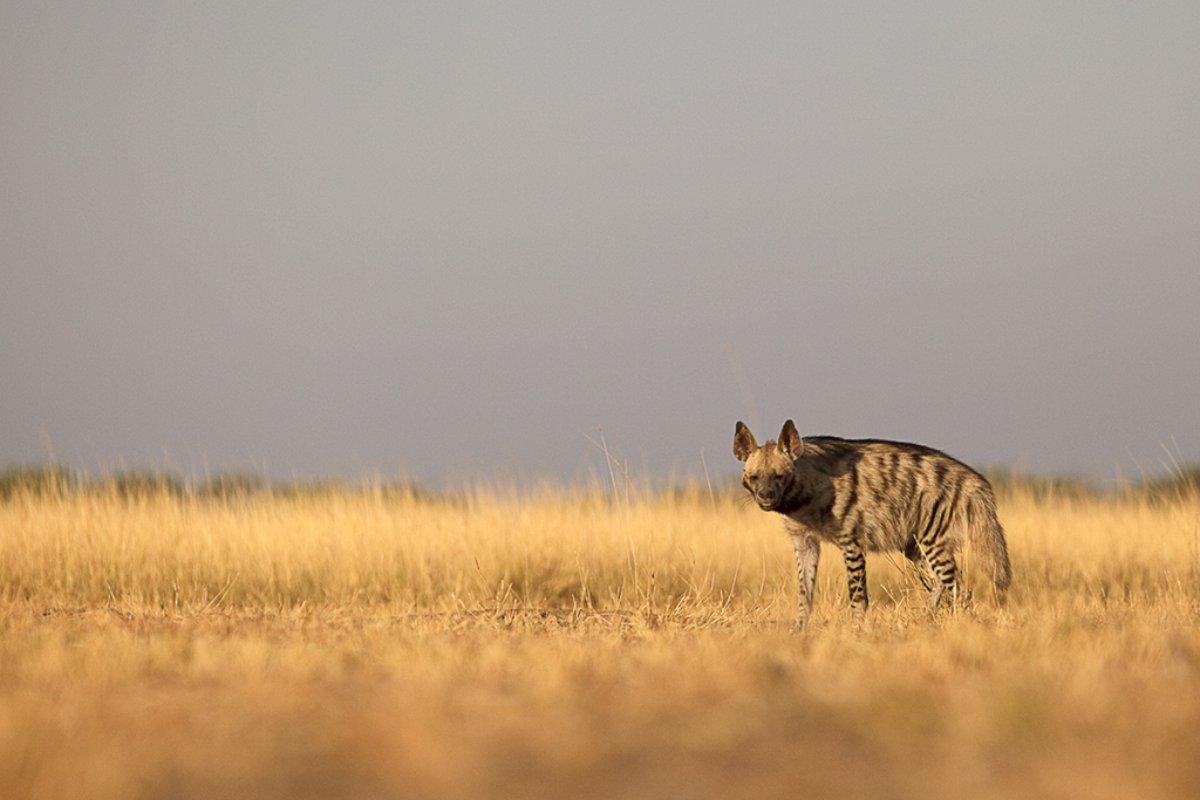
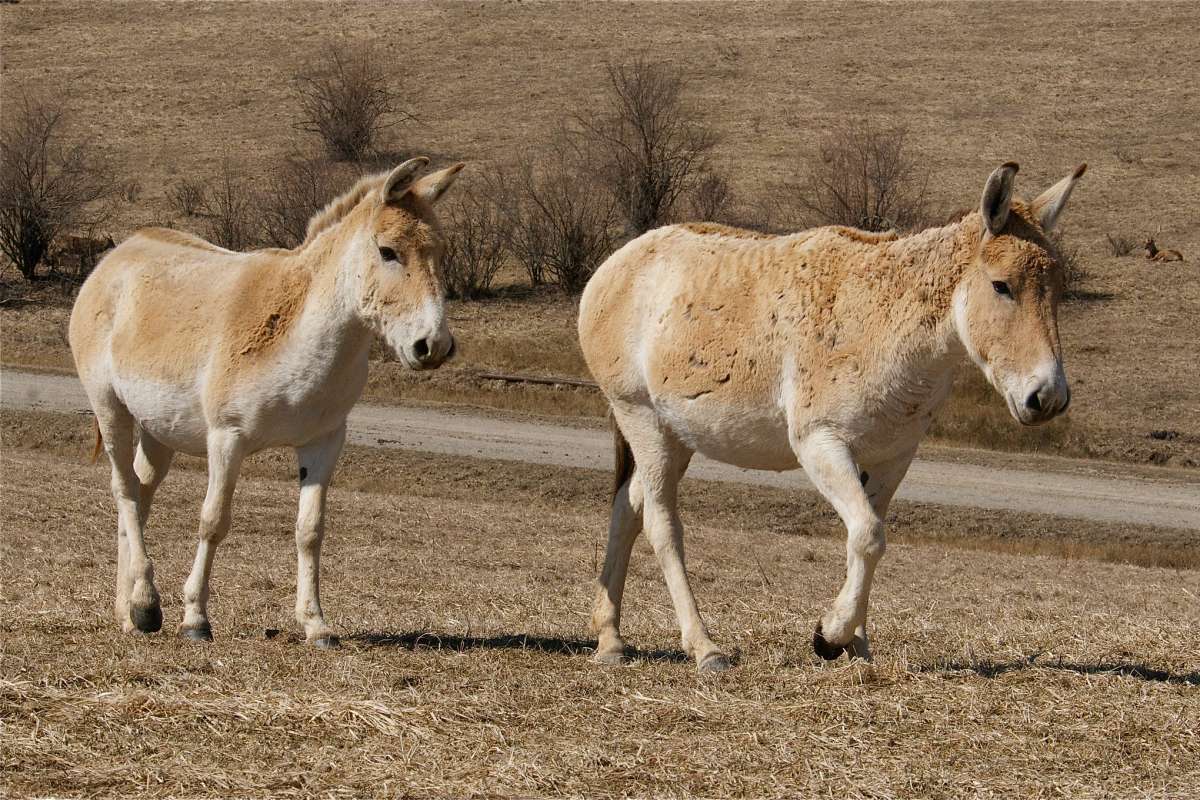
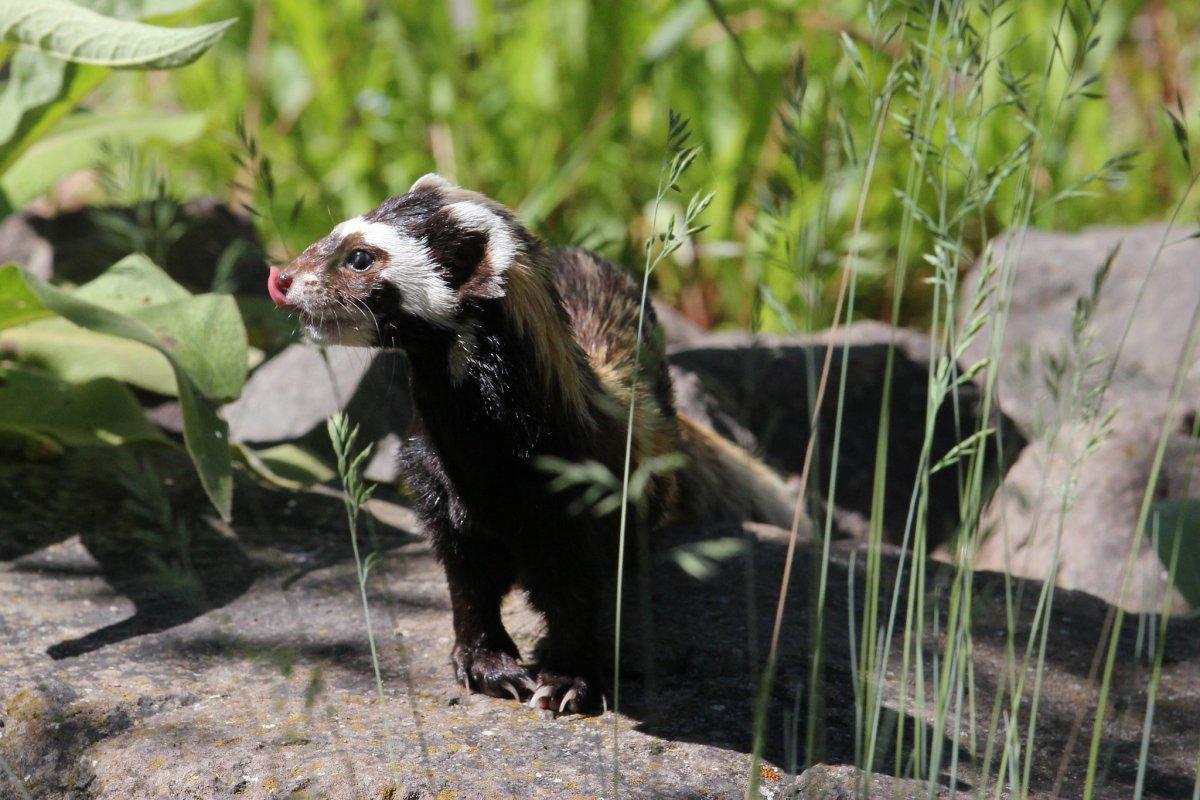

![20 Wild Animals in Tanzania [Wildlife in Tanzania]](https://www.kevmrc.com/wp-content/uploads/2022/12/20-wild-animals-in-tanzania.jpg)
![33 Wild Animals in Malaysia [Wildlife in Malaysia]](https://www.kevmrc.com/wp-content/uploads/2022/12/33-wild-animals-in-malaysia.jpg)
![10 Wild Animals in Chad [Wildlife in Chad]](https://www.kevmrc.com/wp-content/uploads/2022/12/10-wild-animals-in-chad-africa.jpg)